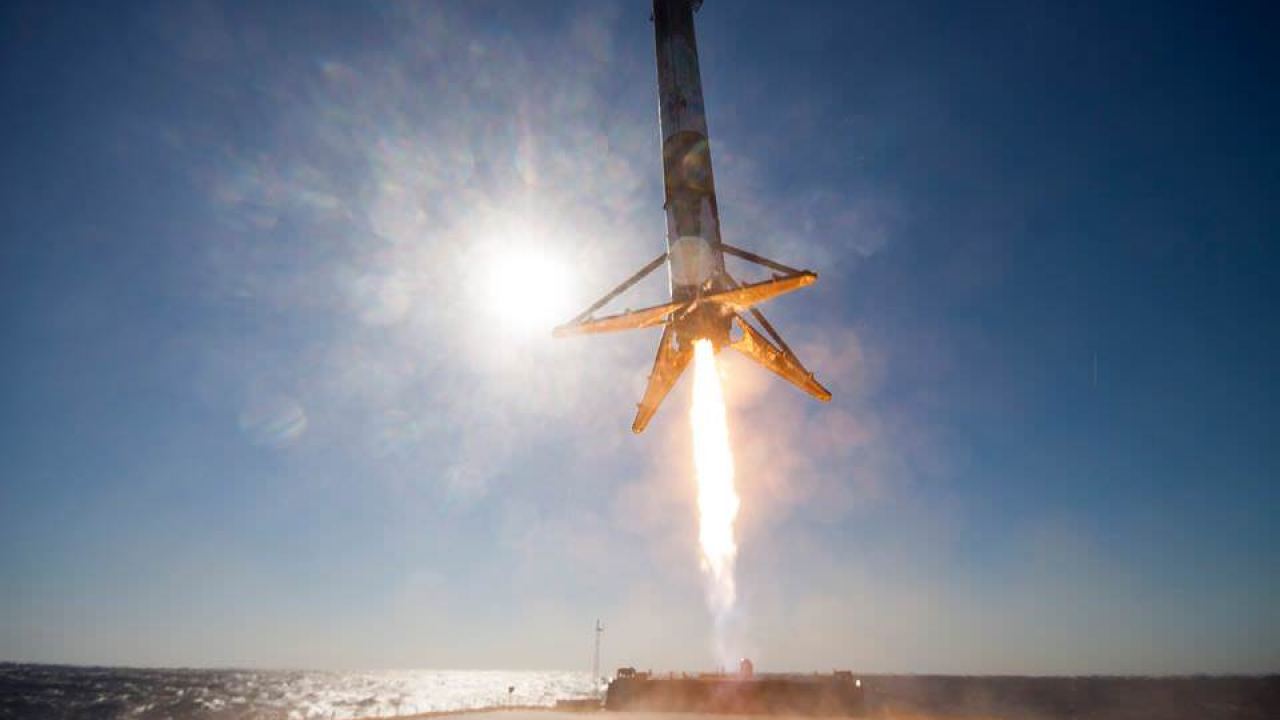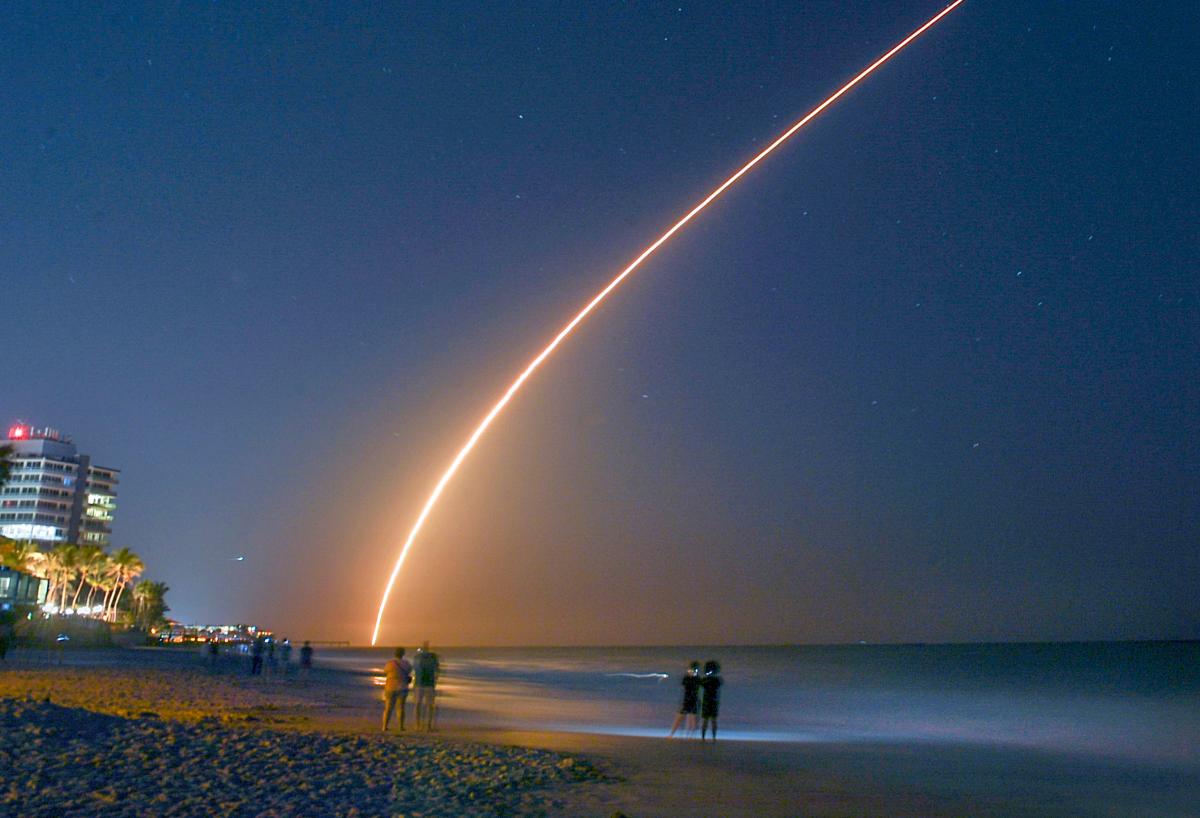In a groundbreaking collaboration, SpaceX has successfully launched a heavy satellite into orbit on behalf of the Indian Space Research Organisation (ISRO), marking a significant milestone for both organizations. The mission signifies the increasing globalization of space exploration and commercial satellite deployment, demonstrating how partnerships between private companies and national space agencies can yield transformative results.
The satellite, a cutting-edge communication platform, was carried aboard SpaceX’s Falcon 9 rocket and launched from Cape Canaveral Space Force Station in Florida. The success of this mission not only highlights SpaceX’s prowess in the global commercial space industry but also underscores ISRO’s ambitions to expand its footprint in the international satellite market.
The Mission: A Game-Changer for Global Space Collaboration
The satellite launched during this mission was designed and developed by ISRO, India’s premier space research agency. It is one of the largest and most sophisticated communication satellites ever developed by the organization, equipped with advanced transponders to improve telecommunications, broadcasting, and data transfer capabilities across India and neighboring regions.
By choosing SpaceX for this high-stakes launch, ISRO has taken a strategic step to leverage the efficiency and reliability of the Falcon 9, SpaceX’s workhorse rocket known for its cost-effectiveness and reusability. This decision marks a significant shift, as ISRO typically relies on its indigenous launch vehicles, such as the Polar Satellite Launch Vehicle (PSLV) and the Geosynchronous Satellite Launch Vehicle (GSLV).
The collaboration highlights the growing trend of national space agencies outsourcing satellite launches to private companies, enabling them to focus on innovation, research, and strategic space missions.
Why This Partnership Matters
The SpaceX-ISRO collaboration reflects a confluence of interests between a pioneering private space company and a globally recognized space agency. Several factors make this partnership particularly noteworthy:
1. Expanding ISRO’s Global Reach
ISRO has been steadily building a reputation as a reliable and cost-effective partner in the global space industry. This mission allows ISRO to showcase its technological capabilities to a wider audience, potentially attracting more international clients for its satellite services.
2. Demonstrating SpaceX’s Versatility
For SpaceX, this mission underscores its ability to serve diverse clients, including government space agencies outside the United States. It reinforces the company’s position as a leading global player in commercial spaceflight, capable of accommodating a wide range of payloads.
3. Strengthening India-US Space Relations
This mission also highlights the deepening space cooperation between India and the United States. Collaborative efforts like these pave the way for further joint ventures in space exploration, technology sharing, and scientific research.
Details of the Satellite
The satellite aboard the Falcon 9 rocket is a high-throughput communication satellite designed to serve a variety of purposes, including:
- Improving Internet Connectivity: Enhancing broadband services in remote and underserved regions of India.
- Supporting National Development Goals: Enabling better access to tele-education, telemedicine, and e-governance.
- Strengthening Strategic Communication: Providing critical communication infrastructure for defense and emergency response.
The satellite’s innovative design ensures it can operate efficiently in a geostationary orbit, providing uninterrupted coverage to its target regions.
Falcon 9: The Rocket of Choice
SpaceX’s Falcon 9 rocket has become a trusted launch vehicle for clients worldwide, thanks to its:
- Reusability: The ability to reuse its first-stage booster significantly reduces costs.
- Reliability: With over 200 successful launches, the Falcon 9 has established an impressive track record.
- Payload Capacity: It can carry heavy satellites, making it an ideal choice for large communication payloads like ISRO’s satellite.
For this mission, the Falcon 9’s first stage successfully returned to Earth, landing on SpaceX’s drone ship stationed in the Atlantic Ocean, further demonstrating the company’s commitment to sustainable spaceflight.
ISRO’s Growing Global Ambitions
ISRO has long been recognized for its innovative and budget-conscious approach to space exploration. From its record-breaking launch of 104 satellites in a single mission to its ambitious Mars Orbiter Mission (Mangalyaan), ISRO has consistently pushed the boundaries of what is possible on a limited budget.
Collaborating with SpaceX allows ISRO to allocate more resources toward its ambitious projects, including:
- Chandrayaan-3: The continuation of its lunar exploration program.
- Gaganyaan: India’s first manned space mission, scheduled for the near future.
- Aditya-L1: A solar observation mission aimed at studying the Sun.
By outsourcing launches for specific satellites, ISRO can focus on research and development, strengthening its position as a leader in cost-effective space exploration.
The Commercial Space Race
The mission comes at a time when the commercial space industry is booming. With companies like SpaceX, Blue Origin, and Rocket Lab driving innovation, the cost of launching satellites has dropped dramatically, enabling more countries and private organizations to participate in space activities.
For ISRO, collaborating with private companies like SpaceX provides a competitive edge in this rapidly evolving industry. It allows the agency to:
- Expand its capabilities without overextending its resources.
- Build partnerships that enhance its technological expertise.
- Access advanced launch technologies that might otherwise take years to develop domestically.
A Win-Win Collaboration
The success of this mission benefits both SpaceX and ISRO. For SpaceX, it reinforces its reputation as a reliable and versatile launch provider. For ISRO, it demonstrates its ability to collaborate with global leaders in the space industry, enhancing its credibility and appeal to international clients.
This partnership also sends a powerful message about the importance of international cooperation in space exploration. In an era of heightened competition among space-faring nations, collaborations like this highlight the potential for shared success and mutual benefit.
Future Implications
The SpaceX-ISRO mission sets the stage for further collaborations between private companies and national space agencies. It reflects a growing trend of outsourcing specific aspects of space missions to private players, allowing government agencies to focus on strategic and exploratory goals.
For India, this mission could serve as a catalyst for expanding its role in the global space market. By demonstrating its ability to develop world-class satellites and collaborate with leading companies like SpaceX, ISRO is well-positioned to attract new clients and partners.
For SpaceX, the mission underscores its growing influence in the international space community. As the company continues to expand its operations, collaborations with organizations like ISRO will likely become more common, further solidifying its status as a global leader in spaceflight.
Conclusion
The successful launch of ISRO’s satellite aboard SpaceX’s Falcon 9 rocket marks a pivotal moment in the history of space exploration. It highlights the growing interdependence of national space agencies and private companies, showcasing how such partnerships can drive innovation, reduce costs, and achieve remarkable results.
As SpaceX and ISRO celebrate this milestone, the mission serves as a reminder of what is possible when expertise, ambition, and collaboration come together. For the global space industry, it signals a future where cooperation, rather than competition, may hold the key to unlocking humanity’s potential in the cosmos.



